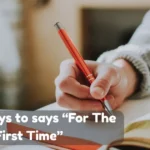“Good Communication Skills” aren’t just a nice-to-have, they’re the secret sauce behind successful relationships, smooth teamwork, and even everyday small talk that doesn’t flop. Think about it:
How many times have you said the “wrong thing” or struggled to get your point across, leaving awkward silences or misinterpretations? You’re not alone, and that’s exactly why mastering the art of clear, confident, and creative communication is so crucial.
In this post, you’ll discover exciting alternatives, unique expressions, and practical ways to level up your conversations with friends, colleagues, family, or partners.
From clever phrases that spark interest to better wording that makes your ideas resonate, these tips are designed to help you communicate naturally, authentically, and memorably.
I’ve pulled these insights from real-life experiences, personal observations, and countless conversations, so you’re getting advice that actually works.
Ready to stop relying on tired clichés and start speaking in ways that get noticed, remembered, and appreciated? Keep reading, because these simple yet powerful techniques will completely transform your good communication skills, and your interactions, starting today.
1. Active Listening in Conversations
Scenario: You’re in a team meeting, and your colleague explains a complex problem. Instead of interrupting, you focus entirely on understanding their point.
Explanation: Active listening is a key good communication skill that shows attentiveness and respect. It’s a practical way to ensure messages are understood correctly and strengthens personal and professional relationships.
Examples:
- “I hear what you’re saying, and I understand your concern.”
- “Let me summarize what you just explained to make sure I got it right.”
- “Thanks for sharing, I really appreciate your insight.”
Why It Works:Active listening demonstrates empathy, encourages open dialogue, and prevents misunderstandings, making it an essential tool for effective communication.
2. Clear and Concise Messaging
Scenario: You’re sending an email to your manager about project updates. Instead of writing a long paragraph, you organize the information into bullet points.
Explanation: Clarity and conciseness ensure your message is understood quickly. This is a better way to communicate without confusion or unnecessary filler.
Examples:
- “Project X is 75% complete; the remaining tasks are…”
- “Please see the attached report for detailed analysis.”
- “Let’s meet tomorrow at 10 a.m. to discuss next steps.”
Why It Works:Clear and concise messaging saves time, increases efficiency, and projects professionalism, making communication stronger and more impactful.
3. Nonverbal Communication Awareness
Scenario: During a presentation, you notice your posture, gestures, and facial expressions. They all reinforce your message rather than distract.
Explanation: Nonverbal cues are a crucial good communication skill that complement spoken words. They convey confidence, interest, and sincerity.
Examples:
- Maintaining eye contact while speaking.
- Nodding to show agreement during a discussion.
- Using hand gestures to emphasize key points.
Why It Works:Nonverbal communication supports verbal messages, enhances understanding, and makes interactions more engaging.
4. Giving Constructive Feedback
Scenario: Your teammate’s report needs improvement. You approach them with specific suggestions rather than criticism.
Explanation: Constructive feedback is a positive, supportive communication skill that helps others improve while maintaining respect and trust.
Examples:
- “I like your introduction, but the conclusion could use more examples.”
- “Consider reorganizing this section for clarity.”
- “Your presentation was great, maybe add visuals next time for more impact.”
Why It Works:Offering feedback this way encourages growth, builds trust, and strengthens professional relationships.
5. Asking Open-Ended Questions
Scenario: You want to understand your colleague’s perspective better, so you ask questions that require more than a yes/no answer.
Explanation: Open-ended questions stimulate discussion and show genuine interest. They are a creative alternative to yes/no questioning and enhance conversation quality.
Examples:
- “How do you envision the project unfolding?”
- “What are your thoughts on improving this process?”
- “Can you share more about your experience with this task?”
Why It Works: These questions foster dialogue, reveal insights, and create deeper connections with others.
6. Empathy in Communication
Scenario: A friend shares their stress about work. You respond with understanding, not judgment.
Explanation: Empathy is the ability to recognize and respond to emotions. It’s a unique expression of care that strengthens relationships and shows emotional intelligence.
Examples:
- “I understand this has been challenging for you.”
- “It sounds like you’ve been handling a lot lately.”
- “I’m here if you want to talk about it.”
Why It Works:Empathetic communication builds trust, shows support, and makes interactions meaningful and authentic.
7. Tailoring Your Message to the Audience
Scenario: You’re explaining a technical process to a non-technical client. You simplify your words and avoid jargon.
Explanation: Adapting communication style to your audience is a smart communication skill. It ensures your message is understood by everyone.
Examples:
- “In simple terms, the software organizes your tasks automatically.”
- “Here’s a visual example to make this clearer.”
- “Let me break down the steps for easier understanding.”
Why It Works:Tailoring messages improves comprehension, avoids confusion, and enhances engagement.
8. Maintaining Professional Tone
Scenario: You’re emailing a potential client. You want to sound polite, respectful, and confident.
Explanation: A professional tone is essential in workplace communication. It demonstrates reliability and credibility.
Examples:
- “I look forward to your feedback on this proposal.”
- “Thank you for considering our services.”
- “Please let me know if any additional information is required.”
Why It Works:A professional tone ensures respect, builds trust, and strengthens your personal and company image.
9. Effective Storytelling
Scenario: During a team meeting, you share a story to illustrate a lesson learned from a past project.
Explanation: Storytelling is a powerful communication skill that makes messages memorable and relatable.
Examples:
- “Last year, we faced a similar challenge, and here’s what worked…”
- “I want to share an experience that highlights the importance of teamwork.”
- “Let me tell you a quick story to explain this concept.”
Why It Works:Stories capture attention, simplify complex ideas, and create emotional connections.
10. Practicing Mindful Communication
Scenario: You pause before replying to a heated email to consider your words carefully.
Explanation: Mindful communication focuses on being present and intentional. It reduces misunderstandings and promotes calm, respectful dialogue.
Examples:
- “I need a moment to think before I respond.”
- “Let’s approach this issue step by step.”
- “I hear your concern and want to address it thoughtfully.”
Why It Works: Mindfulness fosters clarity, reduces conflict, and enhances the quality of interactions.
Read more: 30 Other Ways To Say “I Agree With You Formally” With Examples!
11. Using Positive Language
Scenario: You want to motivate your team instead of pointing out failures.
Explanation: Positive language emphasizes solutions, encouragement, and optimism. It’s a better way to communicate that inspires rather than criticizes.
Examples:
- “We can improve this process by…”
- “Great effort! Let’s try this adjustment for better results.”
- “I appreciate your work on this project; here’s a way to enhance it further.”
Why It Works: Positive language boosts morale, encourages collaboration, and strengthens relationships.
12. Clarifying Misunderstandings
Scenario: During a call, you notice your client looks confused. You take a moment to clarify your point.
Explanation: Clarifying ensures both parties are on the same page, avoiding miscommunication. It’s a unique expression of attentiveness.
Examples:
- “Just to make sure we’re aligned, do you mean…”
- “Let me rephrase that for clarity.”
- “I want to confirm I understood your request correctly.”
Why It Works: Clarifying prevents errors, improves comprehension, and demonstrates professionalism.
13. Balancing Speaking and Listening
Scenario: In a discussion, you ensure you share your ideas without dominating the conversation.
Explanation: Balanced communication shows respect for others’ opinions while expressing your own.
Examples:
- “I’d like to hear your perspective before sharing mine.”
- “Here’s my input, and I’m curious about your thoughts.”
- “Let’s make sure everyone has a chance to speak.”
Why It Works:This skill promotes inclusivity, understanding, and constructive dialogue.
14. Asking for Feedback
Scenario: You finish a report and ask your supervisor for suggestions on improvement.
Explanation: Seeking feedback shows openness to growth and values others’ opinions.
Examples:
- “Do you have any suggestions to improve this section?”
- “I’d love your feedback on my approach.”
- “Could you review this draft and share your thoughts?”
Why It Works: Asking for feedback encourages learning, strengthens collaboration, and enhances outcomes.
15. Nonjudgmental Communication
Scenario: A colleague shares a controversial opinion, and you respond respectfully.
Explanation: Nonjudgmental communication avoids criticism and fosters a safe, open environment.
Examples:
- “I see your perspective; let’s explore it further.”
- “Thanks for sharing; that’s an interesting point.”
- “I’m curious to understand more about your view.”
Why It Works: This approach builds trust, encourages honesty, and reduces defensiveness.
Read more: 30 Other Ways To Say “In Loving Memory” With Examples!
16. Using Appropriate Tone in Texts
Scenario: You’re texting a colleague about a deadline and want to sound polite but clear.
Explanation: Tone in written communication affects how your message is received. Using an appropriate tone ensures your message is professional yet approachable, which is a better way to express ideas clearly.
Examples:
- “Could you please send the report by EOD?”
- “Thanks for your input, it’s really helpful.”
- “Just a reminder about the upcoming meeting tomorrow.”
Why It Works: An appropriate tone prevents misunderstandings, shows professionalism, and builds positive relationships.
17. Expressing Appreciation
Scenario: Your teammate helped complete a challenging task, and you want to acknowledge their effort.
Explanation: Expressing appreciation is a unique communication skill that reinforces positivity and encourages collaboration.
Examples:
- “I really appreciate your help with this project.”
- “Thank you for going the extra mile.”
- “Your contribution made a huge difference, thank you!”
Why It Works: Acknowledging others’ efforts strengthens relationships, boosts morale, and promotes a positive work environment.
18. Being Open to Different Perspectives
Scenario: During a brainstorming session, a teammate presents an idea that’s different from yours.
Explanation: Being open to diverse perspectives demonstrates good communication skills and fosters inclusive dialogue.
Examples:
- “That’s an interesting approach; let’s explore it further.”
- “I hadn’t considered that, thank you for sharing.”
- “I like your idea; maybe we can combine it with mine.”
Why It Works: Openness encourages collaboration, innovation, and mutual respect, making discussions more productive.
19. Managing Conflicts Calmly
Scenario: Two team members have a disagreement, and you mediate the conversation calmly.
Explanation: Conflict management is a key communication skill that helps resolve issues without escalating tensions.
Examples:
- “Let’s find a solution that works for everyone.”
- “I understand both perspectives; here’s a way to move forward.”
- “Let’s focus on resolving the issue rather than blaming.”
Why It Works:Handling conflicts calmly maintains professionalism, prevents misunderstandings, and builds trust among team members.
20. Asking for Clarification
Scenario: A client gives vague instructions, and you need more details before proceeding.
Explanation: Asking for clarification ensures accurate understanding. It’s a better way to communicate that reduces errors and demonstrates attentiveness.
Examples:
- “Could you clarify what you mean by this requirement?”
- “I just want to make sure I understand correctly.”
- “Can you provide an example so I can follow precisely?”
Why It Works:Clarifying prevents mistakes, saves time, and shows professionalism and careful attention to detail.
Read more: 30 Other Ways To Say “Please Advise” With Examples!
21. Giving Clear Instructions
Scenario: You’re assigning a task to a junior colleague and want them to complete it without confusion.
Explanation: Clear instructions are a good communication skill that ensures tasks are completed efficiently and correctly.
Examples:
- “Please submit the report by 5 PM tomorrow.”
- “Follow these steps in order to complete the task accurately.”
- “Let me know if you have any questions before starting.”
Why It Works:Clear instructions reduce mistakes, improve productivity, and foster accountability.
22. Using Humor Wisely
Scenario: During a virtual team meeting, you lighten the mood with a small, appropriate joke.
Explanation: Humor, when used wisely, is a creative alternative to make communication engaging and relatable.
Examples:
- “Looks like the coffee machine is working harder than us today!”
- “I promise this spreadsheet won’t bite.”
- “Let’s tackle this task like superheroes, capes optional.”
Why It Works:Appropriate humor builds rapport, reduces tension, and makes interactions more enjoyable and memorable.
23. Practicing Emotional Intelligence
Scenario: A colleague seems frustrated, and you notice their emotions before responding.
Explanation: Emotional intelligence involves recognizing and managing emotions in communication. It’s a unique skill that strengthens relationships and improves interactions.
Examples:
- “I can see this is frustrating; how can I help?”
- “Let’s take a moment and revisit this calmly.”
- “I understand your concern and want to work through it together.”
Why It Works:Emotional intelligence fosters empathy, reduces conflict, and promotes effective and respectful communication.
24. Using Feedback Loops
Scenario: You finish a presentation and ask the team if your message was clear.
Explanation: Feedback loops are a good communication practice to ensure understanding and continuous improvement.
Examples:
- “Did that explanation make sense to everyone?”
- “Please share your thoughts on this approach.”
- “Are there areas I can clarify further?”
Why It Works:Feedback loops enhance understanding, encourage collaboration, and help refine communication for better outcomes.
25. Being Assertive, Not Aggressive
Scenario: You express your opinion in a team meeting without dismissing others.
Explanation: Assertive communication is a strong communication skill that conveys confidence while respecting others.
Examples:
- “I believe this approach will work best; let’s discuss why.”
- “I’d like to share my perspective on this issue.”
- “Here’s what I think, and I’m open to your feedback.”
Why It Works: Assertiveness establishes credibility, reduces misunderstandings, and fosters respectful discussions.
Read more: 30 Other Ways To Say “Safe Travels” With Examples!
26. Summarizing Key Points
Scenario: At the end of a meeting, you recap the main takeaways for clarity.
Explanation: Summarizing key points ensures everyone understands and retains information. It’s a better way to reinforce communication.
Examples:
- “To summarize, we agreed on three action steps…”
- “Here are the main points we discussed today…”
- “Let’s recap before we close the meeting.”
Why It Works:Summarizing increases clarity, reinforces understanding, and ensures alignment among participants.
27. Avoiding Assumptions
Scenario: You receive incomplete information and confirm details before proceeding.
Explanation: Avoiding assumptions is a critical communication skill that prevents errors and misunderstandings.
Examples:
- “Can you confirm the deadline for this project?”
- “I just want to make sure I understand correctly.”
- “Let’s review the requirements before we start.”
Why It Works:This approach minimizes mistakes, enhances accuracy, and demonstrates thoroughness and professionalism.
28. Using Visual Aids Effectively
Scenario: You present data using charts and diagrams to make complex information easy to understand.
Explanation: Visual aids are a creative alternative to explain ideas clearly and make communication engaging.
Examples:
- “Here’s a chart showing last quarter’s results.”
- “This diagram illustrates the workflow step by step.”
- “Let’s use a visual to explain this complex concept.”
Why It Works:Visual aids simplify understanding, maintain audience engagement, and reinforce your message.
29. Encouraging Open Communication
Scenario: You create an environment where teammates feel safe sharing ideas without judgment.
Explanation: Encouraging open communication is a good communication skill that fosters transparency and collaboration.
Examples:
- “Feel free to share any suggestions or concerns.”
- “All ideas are welcome; let’s discuss them openly.”
- “Your input is valuable, so please speak up.”
Why It Works:Open communication builds trust, encourages creativity, and strengthens team cohesion.
30. Continuous Improvement in Communication
Scenario: You reflect on past conversations and look for ways to improve your communication skills.
Explanation: Continuously improving communication ensures growth, adaptability, and effectiveness in all interactions. It’s a unique expression of commitment to excellence.
Examples:
- “I’m working on being more concise in emails.”
- “I plan to improve my presentation skills for future meetings.”
- “I’m seeking feedback to enhance my communication effectiveness.”
Why It Works:Continuous improvement ensures long-term effectiveness, demonstrates professionalism, and fosters stronger relationships.
Pros and cons of using “Good Communication Skills”
pros
- Enhances Relationships: Helps build trust and stronger personal and professional connections.
- Improves Team Collaboration: Encourages effective teamwork by reducing misunderstandings.
- Boosts Career Opportunities: Professionals with strong communication skills are often more promotable.
- Increases Clarity and Efficiency: Ensures messages are understood quickly, reducing errors.
- Supports Conflict Resolution: Helps manage disagreements calmly and constructively.
Cons
- Time-Consuming: Effective communication sometimes requires extra time for clarification and feedback.
- Risk of Misinterpretation: Even good communicators can occasionally be misunderstood.
- Over-Communication: Sharing too much information can overwhelm others.
- Emotional Vulnerability: Being empathetic and open can expose one to criticism or rejection.
- Dependence on Others’ Responsiveness: Effective communication relies on others being receptive and attentive.
Closing words
Good Communication Skills are the foundation of meaningful interactions, helping you express ideas clearly, build trust, and connect authentically with others.
By exploring fresh wording, creative alternatives, and unique expressions, you can avoid repetitive phrases and make your messages stand out.
These approaches are useful in conversations with colleagues, friends, social media posts, or professional notes, offering different ways to say what you mean with clarity and thoughtfulness.
Try incorporating one of these strategies in your next message or meeting, you’ll notice how it changes the tone and impact. Using these alternatives not only improves clarity but also shows sincerity and intentionality.
Mastering good communication skills strengthens your connections, enhances authenticity, and leaves a lasting impression in every interaction.




